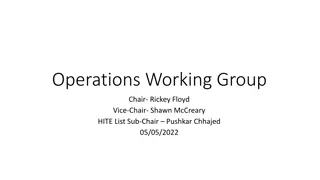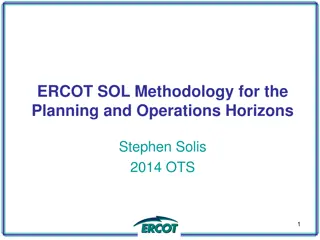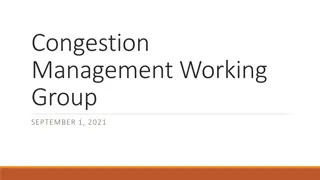Enhancing UFLS Strategies for Improved Grid Reliability
Addressing the challenges in underfrequency load shedding (UFLS) strategies, the proposal suggests extending obligations to all loads, emphasizing compliance with ERCOT protocols. It highlights the need for a holistic approach to emergency load shedding procedures and discusses the limitations of current management practices. The Rainbows, Butterflies, and Daffodils Proposal introduces a innovative fungible product concept to enhance grid resilience through load shedding flexibility.
Uploaded on Dec 07, 2024 | 0 Views
Download Presentation

Please find below an Image/Link to download the presentation.
The content on the website is provided AS IS for your information and personal use only. It may not be sold, licensed, or shared on other websites without obtaining consent from the author.If you encounter any issues during the download, it is possible that the publisher has removed the file from their server.
You are allowed to download the files provided on this website for personal or commercial use, subject to the condition that they are used lawfully. All files are the property of their respective owners.
The content on the website is provided AS IS for your information and personal use only. It may not be sold, licensed, or shared on other websites without obtaining consent from the author.
E N D
Presentation Transcript
UFLS Options Getting Back To Reality March 20, 2023
Purpose Frequency after event of 5/15/03 02:52 I. Underfrequency Load Shed 60.1 60 I. Arrests frequency decay on rapid loss of generation 59.9 59.8 Frequency 59.7 I. May 15, 2003 Turkey Vulture dropping event 59.6 59.5 59.4 II. Arrest frequency decay on slow decline in frequency 59.3 59.2 -50 0 50 100 150 200 250 300 350 400 450 500 550 600 650 700 750 800 I. Uri! Seconds II. Must be automated I. May not be time for operator instruction III. Must be controlled I. Interruption of too little load could allow further decay II. Interruption of too much load could cause frequency overshoot and instability Red = BAD 2
Previous Proposal The UFLS obligation should belong to the LFL for compliance (i.e., 5-10-10) The 5-10-10 is applicable to 25% of site load. Design so that the load is not shed at the transmission level breaker or that the load shed is not excessively above each step requirement. ERCOT may require P.E. attestation for correct installation of breakers provided to ERCOT and TO. LFL UFLS requirement will not be in the denominator for TO load shed obligation. Above would apply unless the Transmission Operator assumes the UFLS obligation Details of responsibility defined in Facilities Extension Agreement (FEA) or Interconnection Agreement (IA) 3
What is the problem? Reality of the need Proposal only applies to a random subset of loads Registered LFLs If need is real (and it is) the requirement should be for all load Reality of the Rules Texas Administrative Code Title 16, Part 2, Chapter 25, Subchapter I, Division 1 Rule 25.200 (a): (a) Procedures. The Electric Reliability Council of Texas (ERCOT) shall direct non- discriminatory emergency load shedding and curtailment procedures for responding to emergencies on the transmission system in accordance with ERCOT protocols. (emphasis added) I don t write the rules, I just follow them Reality of the Load Most loads can t be subdivided into 5/10/10% bitesized chunks Bitcoin mines can, but this isn t just about Bitcoin mines Compressor stations, steel mills, electrolyzers Even for loads that can, it s very expensive Reality of the Management Assuming the loads can subdivide as proposed, there is no need for the QSE to monitor TO can perform the same monitoring they are already doing 4
What can be done? There is no Silver Bullet If it were easy, it would have already been done Options Previous offered by the TSPs (hammering the square peg) Previous with TSP monitoring (peg is still square) OR! 5
The Rainbows, Butterflies and Daffodils Proposal (RBD) For transmission class customers: Convert requirement into a fungible product MWs of load shed at each frequency tier Actuated by UF relay that is remotely armable and monitored Product can be set up as annual, quarterly, business hours Loads are allowed to trade their MWs with other loads for coverage Can be ran as a centralized ERCOT market or bilateral Obligations would be assigned to all loads Self provision would obviously be allowed Cleared loads would be paid by others with unmet obligations Managed at QSE level Once obligations are set, QSE would follow compliance criteria Considerations Additional timeframes are needed to allow broader participation However, creates additional burden on monitoring Large loads are not as diverse as bulk distribution load May need alternate criteria for compliance 6























